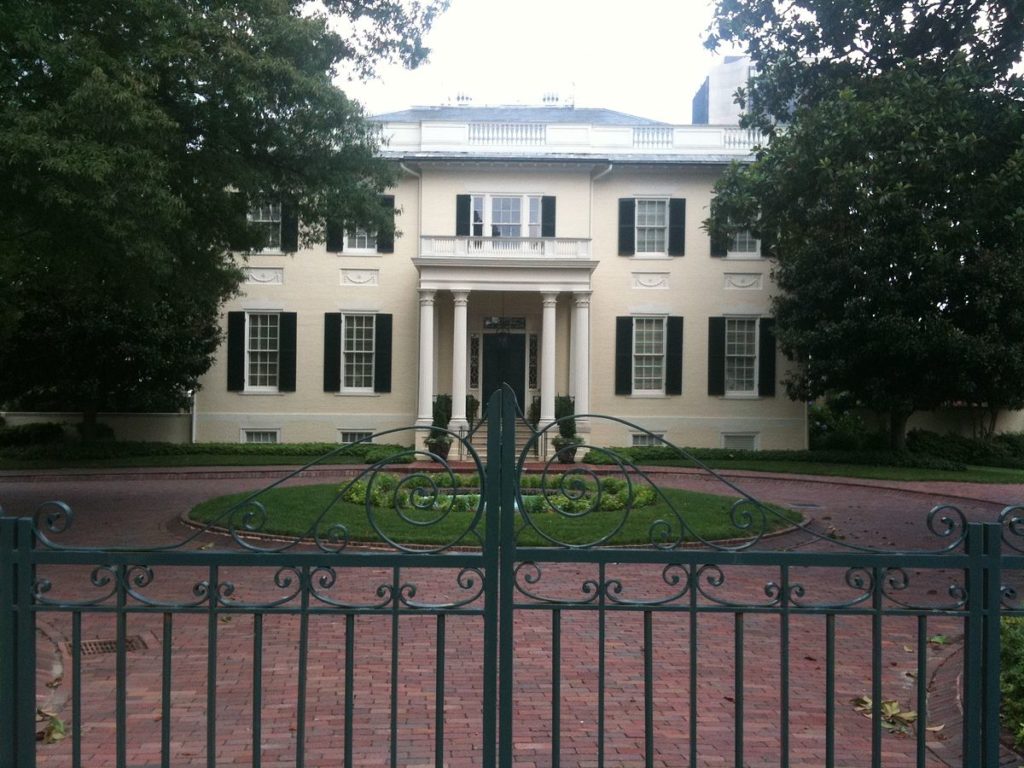All About Politics: Virginia’s Governor’s Race
By • October 26, 2017 0 630

Everybody interested in politics will be watching the returns coming in on Tuesday, Nov. 7. The big race is in Virginia.
The national Democratic Party wants to continue its winning streak in the Commonwealth. Virginia is the only Southern state Hillary Clinton won in 2016.
The state is growing increasingly blue in presidential years. Barack Obama won Virginia in both 2012 and 2008. Before that, the last Democrat the state went for was LBJ in 1964. Even in the era of the “Solid South,” Eisenhower carried the Old Dominion in 1952 and 1956.
Right now, Dems hold the governorship, the lieutenant governor’s office and the office of attorney general.
The big problem for Virginia Democrats is the composition of the electorate in these off-off-year elections. In 2016, voter turnout was an impressive 72 percent of registered voters. But in the last election for governor, in 2013, it dropped dramatically to 43 percent.
Those who do turn out to vote are older and overwhelmingly white, with a conservative political philosophy. This is what the Democratic nominee, Ralph Northam, faces.
What Northam has going for him is that he will pile up huge numbers in northern Virginia. The question is not what will be Northam’s NoVa victory margin, but will turnout in that region be big enough to offset Republican nominee Ed Gillespie’s numbers in rural, exurban, small-town and southwest Virginia.
One positive harbinger — pointed out by political insider Larry Roberts (a key Tim Kaine advisor in the 2005 governor’s race) — was a school-board race in Fairfax County last August. The Democrat won that race and the turnout was triple the usual.
Roberts makes another important point concerning turnout in elections for governor. If it is 39 percent, Democrats are in trouble. If it is near 45 percent, they are in good shape.
Final prediction by perceptive observer Roberts: either the Republican ticket or the Democratic ticket will win in a sweep.
Up for reelection, Lt. Gov. Justin Fairfax, a Democrat who was raised in D.C., is facing Republican Jill Vogel. For attorney general, incumbent Mark Herring faces Republican John Adams.
All 100 House of Delegates seats are up. Right now, the GOP has 64 seats while the Dems have just 36. The Dems are hoping to pick up six to eight (that’s all).
Roberts points out that there are 17 House seats held by Republicans in districts that backed Hillary Clinton. Naturally, Dems would like to pick up all 17 of those. That would give them a majority in the House.
No one is banking on that.
Final comment made by seer Roberts: watch Chesterfield County. It comes in early. If Dems cut into the usual Republican margin, it will be a good night for the Dems.
What I’m most interested in is: Will Dems and Independents fed up with Trump actually come out in huge numbers and register their anger by voting for the Democratic ticket?
Will Donald Trump set foot in Virginia?
Gillespie desperately wants Trump’s supporters — but not him. He worries that Trump’s very presence will motivate the anti-Trump vote to come out. Another factor: Gillespie is in no way charismatic. Will his super-bland appeal fail to excite the Corey Stewart Republicans who will sit out the general?
As for the other state, New Jersey: Democrat Phil Murphy will clobber Chris Christie’s Lt. Gov. Kim Guadagno.
In closing: Thank you, Jeff Flake and Bob Corker. Wish you would stay in the Senate.
Political analyst and Georgetowner columnist Mark Plotkin is a contributor to the BBC on American politics and a contributor to thehill.com. Reach him at markplotkindc@gmail.com.

